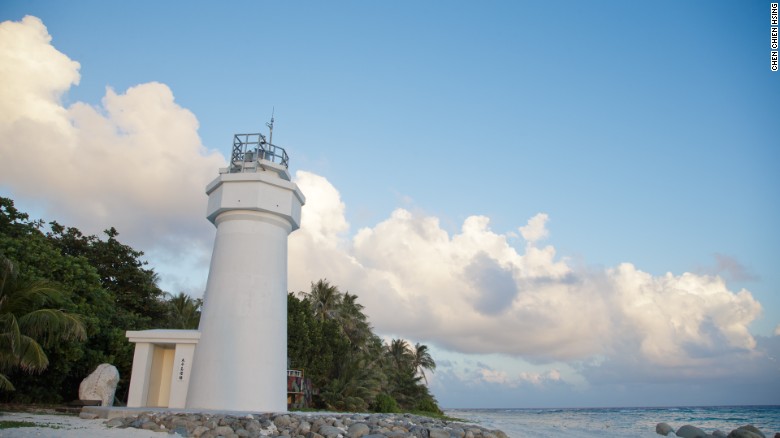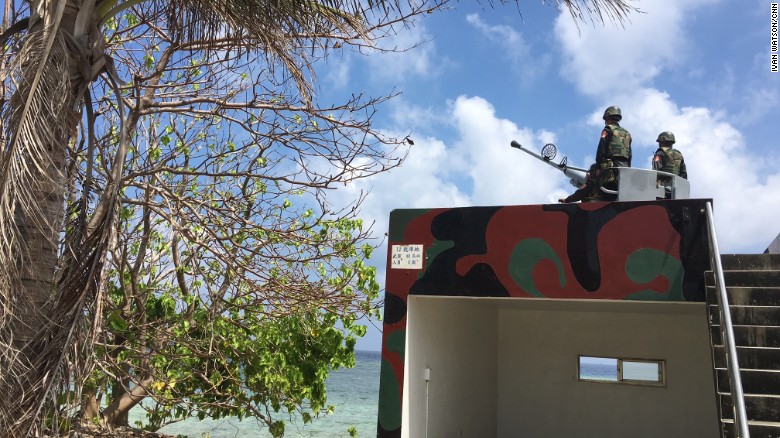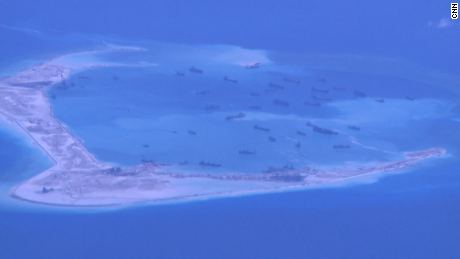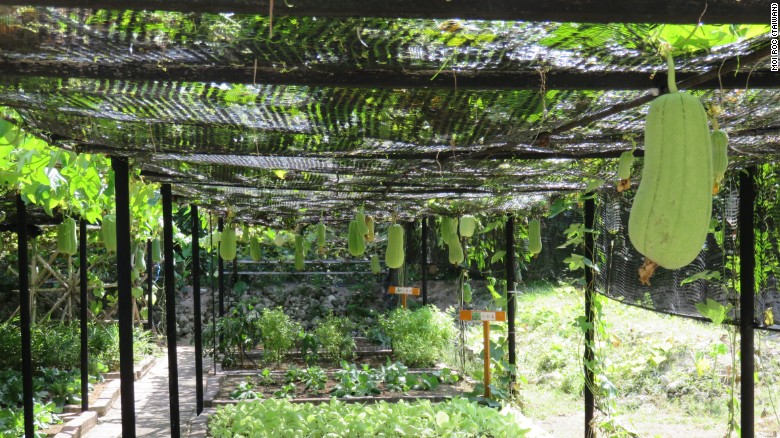But it wasn't until this week, that the government invited journalists to see the tiny place firsthand.
Also
known as Itu Aba, Taiping island consists of little more than a 1,360
meter long airstrip bordered on two sides by palm trees and white sandy
beaches.
But that is enough for
Taiwan to make its case in the growing struggle for control of this
hotly disputed body of water -- where $5 trillion in ship-borne trade
passes through annually.
Island, not a rock
Taiping
Island "is entitled to an exclusive economic zone of 200 nautical
miles," outgoing Taiwan president Ma Ying-jeou told journalists on
Wednesday -- which gives a country special rights over the seabed, and marine resources like fish.
However,
there at least six countries laying competing claims to different parts
of the South China Sea, including Vietnam, Taiwan, Indonesia,
Philippines, Malaysia and Brunei.
China, with a large U shape on its maps, lays claim to virtually all of the contested waters.
To
cement its stance, Beijing has been building man-made islands atop
seven reefs it controls in the Spratly archipelago, a series of atolls
far closer to the Philippines and Malaysia than mainland China.
These massive land reclamation projects have made the neighbors nervous.
"Like
most countries we are opposed to militarization or military
expansionism in the area," said Bruce Linghu, deputy foreign minister of
Taiwan.
The diplomat expressed concern that China's ambitious island-building could trigger "possible confrontations or conflicts."
Warnings
In fact, the U.S. and Chinese navies have already engaged in several rounds of shadow-boxing here.
Last May, CNN's Jim Sciutto accompanied a U.S. Navy spy plane on a flight over several of the man-made islands.
"This
is the Chinese navy, this is the Chinese navy. Please go away," a
Chinese radio operator announced in one of at least eight warnings to
the aircraft.
In October, the Chinese government summoned the U.S. ambassador to Beijing to issue a formal protest after the destroyer USS Lassen sailed within 12 nautical miles of the Chinese-controlled Subi Reef in the Spratlys.
The destroyer's voyage was "a very serious provocation, politically and militarily" China's ambassador to the U.S. told CNN's Christiane Amanpour in an interview.
But the U.S. Navy continues to carry out what Washington calls "freedom of navigation" operations in the South China Sea.
"Just
being there in the South China Sea shows that we believe we have the
right to operate in international waters," said Rear Admiral Ronald
Boxall.
He spoke to CNN aboard the
U.S. aircraft carrier John C. Stennis, two weeks after he led a carrier
strike group conducting operations in the South China Sea.
During
that journey, the U.S. Navy reported seeing far more Chinese navy ships
around the strike group than on previous deployments.
"It's
a growing navy -- there's no question," said Admiral Boxall, as F-18
fighters catapulted off the deck of the aircraft carrier into the sky.
"As
you see a navy get larger, and you see a lot of activity in the South
China Sea, you always wonder at what point what exactly that's going to
mean to our navy and our presence there," he added.
Shifting alliances
Beijing's forceful maritime moves have prompted some smaller countries in the region to welcome the U.S. Navy's presence here.
In recent months, former U.S. enemy Vietnam publicly called on the U.S. to play a bigger role in the South China Sea.
And
nearly a quarter century after the U.S. closed its military bases on
the Philippines, both governments announced last week a new agreement
for U.S. troops to make use of five bases on the island nation.
"It's
certainly leading to a bit of an arms race in the region. Chinese
behavior in the South China Sea is creating incentives for different
countries in the region...to bolster their defense budgets," said J.
Michael Cole, a Taiwan-based analyst with the University of Nottingham's
China Policy Institute.
Legal challenge
The
Philippines, whose military is dramatically out-gunned and
out-resourced by China, is also attempting to use international law to
challenge Beijing.
It has taken
China to the Permanent Court of Arbitration at The Hague, arguing that
China's occupation of the Spratly Islands violates the United Nations
Convention on the Law of the Sea (UNCLOS). A ruling is expected in May.
China refuses to participate and doesn't recognize the court's jurisdiction.
"I
think this can backfire on China," warned Daniel Pinkston, a South
Korea-based lecturer on international relations with Troy University.
"If
you act opportunistically in the short run, using your power
capabilities to grab benefits without restraint, then other states will
start forming a coalition against you."
But the Philippines-China arbitration case led to an unforeseen consequence: a challenge from Taiwan.
The
government of Taiwan, officially known as the Republic of China,
rejects claims by the Philippines' legal team at the Hague that Taiping
does not deserve to be called an island, according to international
maritime law.
To prove this point,
officials invited journalists on a three hour, 1577 km (980 mile)
military flight from an airforce base in southern Taiwan to Taiping
Island.
Such a public relations
exercise is particularly important for Taiwan, which isn't a member of
the U.N. and thus not a signatory to UNCLOS -- China considers Taiwan a breakaway province and blocks its membership of most international organizations.
Azure waters
From
the air, we could see the coral reefs and atolls that speckle the azure
waters of the South China Sea in the Spratly archipelago.
On
Taiping, officials showed off small vegetable gardens, chicken coops
and a pen full of goats that help feed the 167 coast guard officers
based on the island.
They also invited visitors to sample the water drawn from one of the island's fresh water wells.
Taiping
"is blessed with an abundance of high-quality freshwater," President Ma
later explained. He invited representatives from the Philippines and
judges from the Court of Arbitration to visit the island.
The
leader argued that if Taiping officially won the designation of being
an island, Taiwan could theoretically argue for fishing rights as well
as permission to explore for minerals in the seabed in a huge 200
nautical mile [230 mile, 370 km] economic exclusion zone surrounding it.
Taiwan's goal, Ma said, is to transform Taiping into "an island for peace and rescue operations."
But
the tiny island's palm tree-lined beaches also bristle with concrete
military bunkers, anti-aircraft guns and helmeted, uniformed guards.
What
should be a remote tropical paradise is instead part of a much larger
power struggle over the future of the South China Sea.









No comments:
Post a Comment